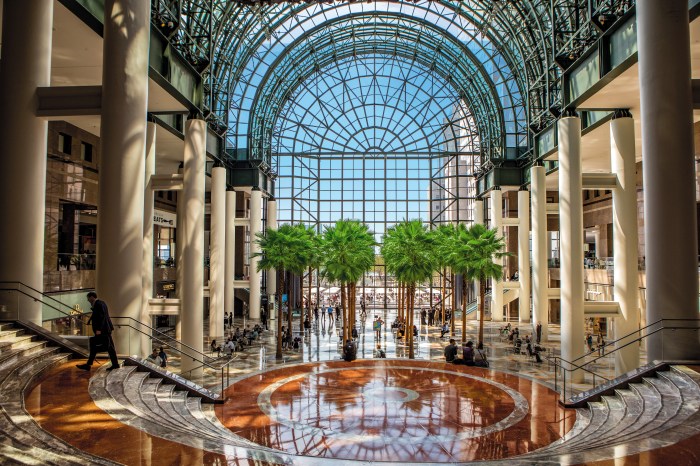
Whether you‘re a sunbather, a birder, a cyclist or just out for a stroll, the Central Park of today offers a clean, green and welcoming oasis from the city grind. But longtime New Yorkers remember a not-so-distant past when the park was distressed, revenue-starved, graffiti-covered and dangerous in parts.
As president of the Central Park Conservancy from its inception in 1980 until her retirement in 1995, Elizabeth Barlow Rogers played a major role in shaping the park’s transformation from what she calls “near death” in the 1970s to its current “golden age.”
The year before the private nonprofit group was formed, Rogers had been appointed to the new city position of Central Park administrator, a post she held throughout her Conservancy tenure that nominally made her responsible for the 843-acre park. Her first day on the job, a local reporter taught her a valuable lesson about the city’s feelings toward her new charge.
“[I was] showing him ‘my’ park,” she recalls, “and he said, ‘Lady, it’s not your park, it’s everybody’s park.’ And I never used the possessive pronoun again.”
Rogers’ forthcoming memoir, “Saving Central Park,” is equal parts personal history and park history. It is difficult to imagine a more perfect guide than Rogers, who embodies aspects of historian, gardener, politician, city planner, landscape architect and plain old park lover.
On a gorgeous spring morning last week, we spent a leisurely two hours walking the park with Rogers, talking about its past, its future and her new book.
Under Rogers’ leadership, the Conservancy took a holistic approach to the park, viewing it as a unified work of art, much the way it was envisioned by the original designers, Frederick Law Olmsted and Calvert Vaux, in 1858.
“The park was this beautiful romantic landscape,” Rogers says, “It’s where you were meant to get away from the city and have this experience of rural nature, even though its manufactured.”
She is impassioned and demonstrative as she walks, relating the story behind some statue or monument or trees, chatting with birders, or highlighting design touches, such as the lampposts reinstalled by the Conservancy at the north end of the mall which were crafted in 1902 by Henry Bacon — designer of the Lincoln Memorial.
Pointing to a bit of carved-out schist framing the bridal path on the park’s western edge, she adds, “See the rock just sort of melts into the hillside. And it’s just beautiful.”
Rogers writes candidly about the Conservancy’s many successes and its major defeats, as well as her own learning curve when dealing with city’s maze of power, politics and money.
Some of her sharpest critiques, both in the book and today, are reserved for the NYC’s ultimate power player, former Parks Commissioner Robert Moses, who upon taking the title in 1934 immediately “put his stamp on the park,” Rogers says.
And while she has nothing but disdain for many of Moses’ initiatives, such as the parking lots he installed in the park, Rogers acknowledges much that Moses did was right, including the 22 “hugely successful” playgrounds that he built.
The Conservancy’s task, she says, was to take those Moses designs, “caged” and “very definite,” and integrate them more seamlessly into the park, starting with the low fences seen today.
She warmly describes her interactions with artists such as Yoko Ono, Christo and Jeanne-Claude, and philanthropists, including the late Lucy Moses.
As for the future of the park, Rogers says she is “absolutely thrilled” with Mayor Bill de Blasio’s recent announcement that cars will be banned from the park below 72nd Street.
“I can’t tell you how long the Conservancy, from the beginning, has campaigned [for the closure],” Rogers says. “This is brilliant.”
And she believes the Conservancy itself is in great hands under its new president, Elizabeth W. Smith. Their annual Women’s Luncheon just raised $4 million for the park.
When she is in the city, Rogers still goes to the park every day, but she and her husband now also spend a lot of time in New Mexico.
“It’s not for nothing they call New Mexico the land of enchantment,” she says.
But her devotion to and love for Central Park is undiminished. Stopping to gaze at the American elms along the mall, she spreads her arms and exults with awe, “Look at this, it’s like the nave of a cathedral.”






























